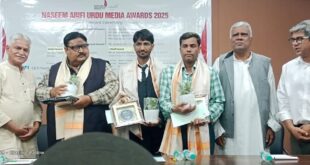Prince Mukarram Jah was the titular 8th Nizam of Hyderabad. He was the eldest son of the 7th Nizam, Mir Osman Ali Khan, and his wife, Princess Durru Shehvar.
1. Dual Royal Lineage: Mukarram Jah was born into two illustrious royal dynasties. His mother, the Princess of Berar Durru Shehvar, was the daughter of the last Caliph of the Ottoman dynasty, Abdul Mejid II. On his father’s side, he descended from the Deccani royal family, with his father, the Prince of Berar Azam Jah, being the son and heir of Osman Ali Khan, the last reigning Nizam of Hyderabad.
2. Early Recognition: Even in his youth, Mukarram Jah was recognized as the rightful successor by his paternal grandfather, the seventh Nizam Nawab Mir Osman Ali Khan. This declaration marked him as the heir to the Nizam dynasty from an early age.
3. Educational Pursuits: Mukarram Jah’s educational journey took him to various prestigious institutions worldwide, including the London School of Economics and the Royal Military Academy Sandhurst. He developed a fondness for economic education under the guidance of Prof. Ilyas Barni.
4. Interest in Heavy Machinery: Despite his royal status, Mukarram Jah had a deep interest in automobile engineering and heavy machinery. He often spent his leisure time working on these machines.
5. Military Service: Mukarram Jah served in the Royal Engineers Corps as a Second Lieutenant. He aspired to serve in the Indian Army, even submitting an application under the name Barkat Ali Khan, highlighting his love for the country.
6. Philanthropic Initiatives: He established the Mukarram Jah Trust for Education and Learning (MJTEL) in 1972. The trust aimed to provide educational opportunities to those facing financial constraints and offered training in various professional disciplines, including electrical work, carpentry, plumbing, automobile repair, calligraphy, and binding.
7. Commitment to Education: Mukarram Jah’s dedication to education was further evident when he donated the Purani Haveli, a group of six palaces, to MJTEL. These premises now house the Mukarram Jah School, showcasing his deep commitment to educational activities.
8. Reverence for Sufi Saints: He held a deep reverence for Sufi saints and frequently visited the shrine of Hazrath Khaja Bande Nawaz in Gulbarga. His piety was evident in his regular observance of late-night prayers (Namaz-e-Tahajjud).
9. Community Welfare: Despite residing in Australia and Turkey, Mukarram Jah maintained a deep connection with Hyderabad and extended help to affected families during communal riots in the 1990s. He insisted on providing care and affection to all communities, transcending religious and ethnic boundaries.
10. Legacy of Restoration: Mukarram Jah’s legacy endures through the restoration and public opening of his palaces, including Chowmahalla and Falaknuma, which stand as testaments to the grandeur of the Nizams. His dedication to education continues through the Mukarram Jah School and various properties donated for educational purposes in Aurangabad, Maharashtra.
Prince Mukarram Jah’s life was a shining example of nobility defined by kindness, compassion, and a commitment to serving others, rather than mere wealth or power. His legacy continues to inspire those who had the privilege of knowing him.
 Gawah (The Witness) – Hyderabad India Fearless By Birth, Pristine by Choice – First National Urdu Weekly From South India – Latest News, Breaking News, Special Stories, Interviews, Islamic, World, India, National News
Gawah (The Witness) – Hyderabad India Fearless By Birth, Pristine by Choice – First National Urdu Weekly From South India – Latest News, Breaking News, Special Stories, Interviews, Islamic, World, India, National News




